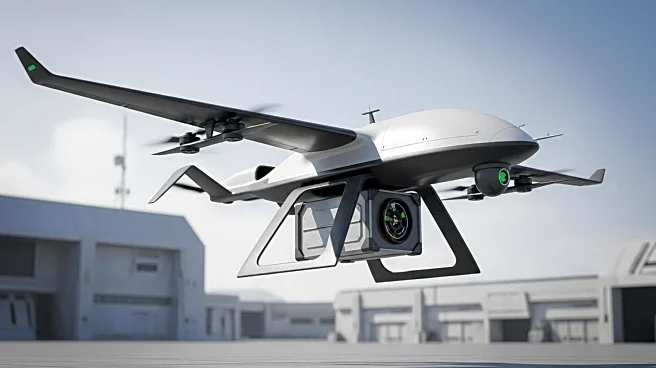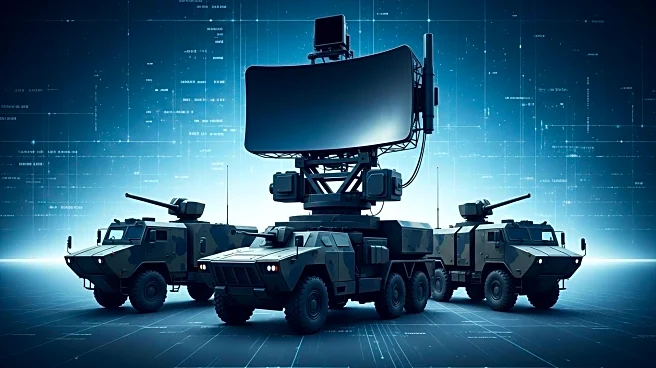What's Happening?
Anduril Industries has unveiled EagleEye, a new mixed-reality system designed for military use, featuring three distinct form factors: helmet, visor, and glasses. This development marks a significant shift in the Army's augmented reality (AR) strategy, as Anduril takes control of the Integrated Visual Augmentation System (IVAS) program. The EagleEye system integrates AI and live sensor feeds directly into soldiers' sightlines, enhancing situational awareness and decision-making capabilities on the battlefield. The announcement follows Anduril's recent $159 million prototyping award, underscoring the Army's commitment to advancing AR technology for military applications.
Why It's Important?
The introduction of EagleEye represents a pivotal moment in the Army's adoption of augmented reality technology. By providing soldiers with real-time data and enhanced visual capabilities, the system aims to improve operational effectiveness and survivability in combat situations. The shift from Microsoft-led testing to vendor-driven prototyping accelerates the procurement process, potentially leading to faster deployment of AR systems. This development also raises important questions about data privacy, AI integration, and the ethical implications of using advanced technology in military operations.
What's Next?
The Army will focus on testing and training soldiers to effectively use the EagleEye system, with an emphasis on integrating AR technology into standard operational procedures. As procurement timelines shorten, stakeholders will likely engage in discussions about oversight, data retention, and the role of AI in decision-making. Lawmakers and defense analysts may push for increased transparency and regulation to address privacy concerns and ensure responsible use of AR technology in military contexts.
Beyond the Headlines
The deployment of AR technology like EagleEye could lead to broader changes in military training and strategy, potentially influencing how soldiers interact with technology on the battlefield. The integration of AI and real-time data feeds may also impact civilian applications, as similar technologies are adapted for use in other sectors. Ethical considerations surrounding surveillance and data usage will continue to be a topic of debate as AR systems become more prevalent in military operations.











